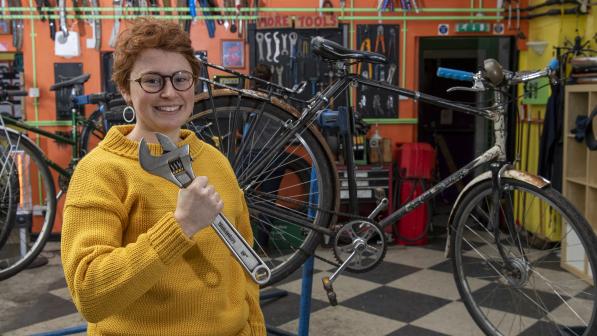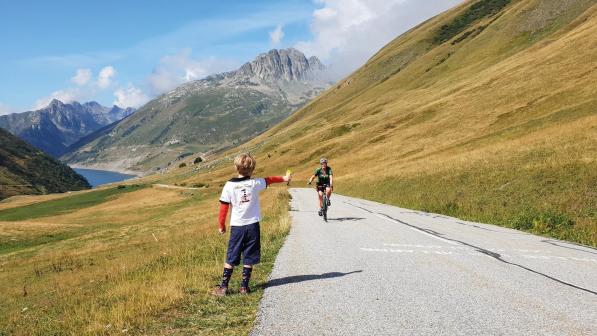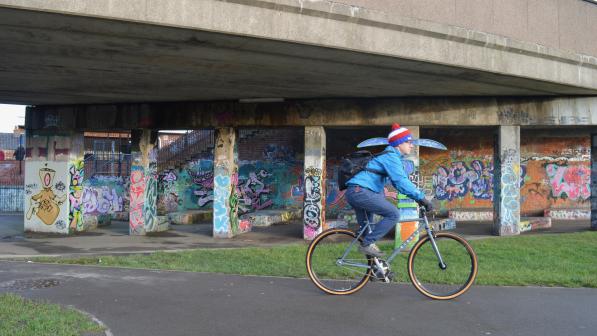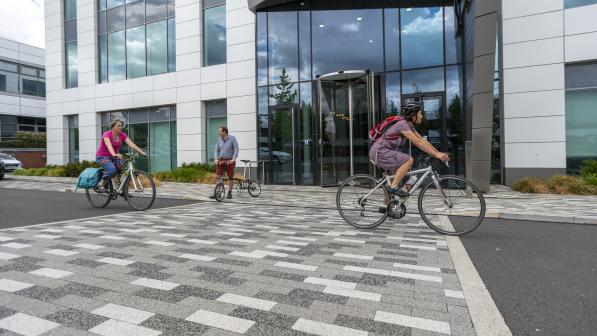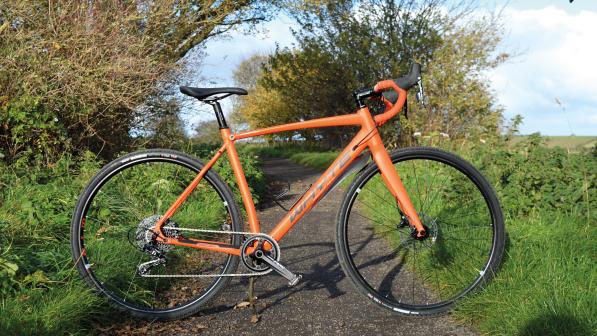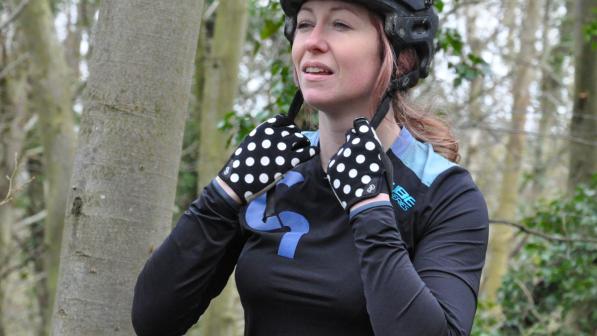Feature: Which bike should I buy?

Buying your ideal bike can be difficult unless you take the Goldilocks approach and keep trying different ones until you find one that’s just right. This can be expensive and/ or time consuming, which accounts for that perennial question on cycling forums: “Which bike should I buy?”
Whatever your requirements there will be more than one bike that will do the job, and often many that will do it well. So the issue is less about narrowing down your options to one single perfect machine than finding a bike that’s a good match for your tick-list. You can ask fellow cyclists for advice, in person and on forums like forum.cyclinguk.org. You can ask at your local shop.
You can even ask Cycle – and lots of you did, through the survey we put online recently. We received so many requests for bike recommendations that it was impossible to answer them here (although we may make this a magazine or website regular if there’s demand). For this article, I picked five quite different queries and recruited five other experts in order to provide a range of opinions. We didn’t confer when writing our answers.
Reading the other queries, certain themes stood out: lightweight e-bikes; women wanting a bike that fitted properly; bikes with lower gears; and bikes with step-through frames. I think this illustrates which people the cycle industry is neglecting: women, older or less able cyclists, and anyone who isn’t a would-be racer wanting a lightweight bike. In the cycling industry, low weight equates to high gears, no equipment, and a sporty riding position, despite the fact that a lightweight bike is actually more important for the older cyclist pedalling at 75 Watts than the race-fit 20-something pedalling at 275W.
Before moving on to the recommendations, it’s worth noting that buying the right bike is tougher than usual right now. Prices have soared and availability has plummeted, thanks to a combination of Brexit, the pandemic, and problems with international shipping. Yet your ideal bike (or one that’s near enough!) may still be out there.
Maggie Grant. Age 73, from Cockermouth, Cumbria

Bike needs: My bike is used for leisure cycling twice a week, mainly on roads and some not-too-bumpy trails, between 20 and 50 miles per trip. I find the hills and passes in Cumbria increasingly difficult and am wondering about buying an e-bike. I want something light enough to lift onto a bike carrier on the car and campervan. I currently ride a Specialized Vita, which I love and find very comfortable. I would like to keep the straight handlebars but would be interested in a partial step-through.
Must have: Straight handlebars. E-bike. Partial step-through. Relatively light for mounting on bike carrier.
Must not have: Heavy motor and battery. Drop handlebars.
Budget: Up to £3,500
Richard Peace
You don’t specify weight expectations but we are seeing increasing numbers of e-bikes at 13-20kg, which is lighter than most. Probably the main lightweight, high-quality motor system that manufacturers use is the Mahle ebikemotion X35. A couple of brands have bikes to fit your needs. Islabikes’ on-road eJanis (£2,699) and – probably more suited to Cumbrian tracks – off-road eJimi (same price) are aimed at older riders. They weigh 13.5kg and 13.8kg respectively. The Ribble Hybrid AL e Step Through also uses the Mahle system and has gravel bike tyres suitable for smoother trails. It has the same modest-sized battery as the eJimi, which should be good for your 20-50 mile range, depending on the usual plethora of factors. At 13.75kg it’s a similar weight to the two Islabikes but rather lighter on the pocket (from £2,299).
The Mahle system is recommended but won’t be as powerful as a mid-motor that drives onto the pedal cranks, which usually means better hill climbing. If you don’t mind a slightly heavier mid-drive model, you could look at the Specialized Turbo Vado SL 4.0 Step-Through (£2,999.99). It features Specialized’s own unusually light mid-drive; total weight is around 15kg, despite a bigger battery than the Islabikes and Ribble e-bikes. (Note that all the e-bikes mentioned here could be fitted with a frame-mounted ‘range extender’ add-on battery.)
A retrofit kit is a possibility for a non-powered bike you love. Cytronex is the best I’ve tried, adding 3.3-3.6kg to the donor bike, but it has rather a small battery (from £995).
Specialized Turbo Vado SL 4.0 £2,999.99

Dan Joyce
I’d recommend an e-bike powered by Mahle’s ebikemotion X35 system. The Ribble Hybrid AL e Step Through (£2,299) is just 13.75kg – or 15kg for the ‘Fully Loaded Edition’ with mudguards and a rear rack (£2,399). Cumbrian hills are steep so you may find the bike’s single 42-tooth chainring too large. While the motor will take the strain, strain is what it will do on climbs like Hardknott Pass as the hub motor doesn’t have the torque of heavier mid-drive motors. You can’t fit a significantly smaller chainring to the existing chainset so you’ll need new cranks too if you want lower gears – and a new bottom bracket if those cranks aren’t SRAM GXP. Either way, lowering the gearing is a straightforward fix for a bike shop and well within your budget.
The Islabikes eJanis and eJimi also use the ebikemotion X35 system and have step-through frames and flat bars, and weigh less than 14kg. Gearing is much lower. The road-focussed eJanis (£2,699) has a 34-tooth chainring driving an 11-40 cassette, while the off-road focused eJimi (same price) has a tiny 30-tooth chainring.
Neither bike has optimal tyres for a mix of roads and tracks. The eJanis’s 30mm road tyres won’t work well off-road; the eJimi’s 29er MTB tyres will drag on road. You can specify 40mm Islabikes Mixte tyres for the eJanis but then its mudguards won’t fit. Better to get the eJimi and fit large volume tyres with minimal tread, such as Continental Contact Speed in 42-622 (£34.95 each). These will be fine on road and on dry, smoother trails. The eJimi is undergeared for road use but could be fitted with a 34t chainring.
Islabikes eJimi £2,699

James Strong. Age 21, from East Leake

Bike needs: I need a bike that I can cycle to uni and work. I live in a village about half an hour away from the town. The commute is all on roads but the terrain is hilly and the surfaces can be rough. I also go on bike trails fairly often, although stick to the better-surfaced routes.
Must have: Be able to fit a pannier. Good range in the gears. Disc brakes. Fit me as a 6ft 2in male. Light so I can carry it upstairs around campus.
Must not have: Suspension. Clip-in pedals.
Budget: £500
Eileen Hamill
For the commuting and leisure rides you describe, I’d recommend a hybrid. Visit a few bike shops and try some bikes for size and comfort. You will be using your bike every day for years, so it is well worth investing a bit of time to get the right one. Unfortunately, coronavirus has impacted supplies of bikes and parts so you may have to pre-order a new bike and wait for it to arrive.
In terms of specific bikes, both my suggestions have aluminium frames and rigid forks to keep the weight down. The Forme Winster 1 City (£449.99) gives you the whole package at a very decent price. It’s out of stock at time of writing but can be ordered. It has hydraulic disc brakes, 3×8 Shimano Tourney gearing, full mudguards, and an alloy pannier rack. Its 700×42C tyres will cope with a variety of road surfaces.
The Trek FX 1 Disc (£475) is also out of stock online but can be ordered in store. It’s available in an XL size to suit you. It doesn’t come with a pannier rack but if you buy a budget rack like the M Part ATP1 rear trekking rack (£26.99) you’ll be roughly on budget. The FX1 Disc has mechanical disc brakes rather than hydraulics. The gearing is ‘only’ 7-speed but a triple chainset means the overall range is still good. Tyres are 700×35C, which should be fine on badly surfaced roads.
Forme Winster 1 City £450

Dan Joyce
I think something will have to give here: the low weight, the disc brakes, or the budget.
If you’re happy to carry a bike weighing around 15kg up a flight of stairs, then the 2020 version of the Carrera Subway 2 (£375) comes in size XL and meets your other requirements: gear range, wider tyres for comfort on trails, and entry-level hydraulic disc brakes. It weighs 13.7kg by itself but you’ll be adding a pannier rack and mudguards; I’d suggest Topeak’s Explorer 29er Disc rack (£45.99) and SKS Bluemels 60mm × 28in mudguards (£39.99).
Pinnacle’s 2020-model Lithium 2 (£400) is a similar style of bike, albeit with 700C wheels instead of 650B and V-brakes instead of discs. V-brakes are okay and save some weight over discs. The dearer Lithium 3 (£500) does have hydraulic disc brakes but will exceed your budget when you factor in a pannier rack and mudguards. Lithiums come with 40mm tyres but can accommodate ones as large as 29×2.2in for trail use.
While I think one of the Lithiums – ideally the 3 in size XL – would be your best bet, Giant’s Escape 2 City Disc is worth considering if you can find a 2020 model (£525). Despite a rear rack, mudguards, and a kickstand, it weighs less than 13kg. The 2021 version is also good but is £124 (!) dearer.

Kath Lyons. Age 75, from Glusburn, nr Skipton, North Yorkshire

Bike needs: I’m a very keen road and touring cyclist who came late in life to cycling at the age of 67, never having had a bike as a child or as an adult. My big problem is getting a bike the right size as I am 4ft 10in tall. I would like a new road bike with good suspension as I suffer from Guyon’s Syndrome.
Must have: Disc brakes. Carbon frame. Actually be a good fit.
Must not have: A saddle bag that’s wedged tight behind the saddle.
Budget: Open ended within the £4,000 bracket
Liz Colebrook
My recommendation is a 44cm Trek Domane SL6 (£3,700), which weighs less than 9.3kg. However, even this smallest size will need some modifications to fit you well.
You mention Guyon’s Syndrome, which affects the hands and the ulnar nerve. I expect you’re prone to numbness in the little fingers and potentially some hand weakness. The Domane features front and rear ‘Isospeed’. This is Trek's lingo for their unique method of ‘decoupling’ junctions of the frame to add an element of suspension. I asked a friend who rides a Trek Boone and she confirmed ‘Isospeed’ does absorb a lot of road shock.
To establish your ideal riding position, I’d recommend a bike fit before buying (Trek stores charge approximately £150). You may need to swap the handlebar for a Genetic Driser-16 bar (£44.99). This would enable you to sit up a bit more on the tops and not reach so far to the drops. The ergonomics of this handlebar should relieve pressure on your hands, specifically the little finger side.
I’d advise fitting Fizik Bar Gel (£21.99) under Brooks Cambium handlebar tape (£30) to maximise comfort. The cushioned and rubbery nature of this bar tape reduces the effort of gripping. Consider changing the chainset to a Middleburn 46 30 165mm (c.£350) to lower the gearing (to 24in–113in) as you’ll be riding in hilly terrain.
The Domane is designed for traveling light. Touring is a different ball game. For that, I’d advise you consider a Sonder Custom Titanium Frame (£1,750). Complete their enquiry box online.
Trek Domane SL6 £3,700

Dan Joyce
I couldn’t find an off-the-peg carbon road bike designed for a 4ft 10in rider. You can buy custom-built carbon frames from, for example, Filament Bikes but the frameset alone will cost you £3,700.
If you do go down the custom route – in whatever material – then 650B or 26in wheels will better suit your height and give more room for a saddlebag. I suspect Liz Colebrook may write about custom steel, so let me suggest something different: custom titanium. If you’re clued-up on bike geometry or are happy to crib the numbers from the 38cm size Surly Straggler 650B, then Waltly Titanium will build you a custom titanium frameset for a good price.
Of the off-the-peg bikes in your size, I’d suggest the steelframed, carbon-forked Kona Rova Ltd (£2,399). The smallest (48cm) is designed for riders from 4ft 10in to 5ft 1in, and our 4ft 11in tester really liked the cheaper Kona Rove NRB last year. The Rove’s wider 650B tyres will help isolate your hands from road buzz, but fit faster rolling ones such as Rene Herse Loup Loup Pass 650×38B (£76 each). Gel bar tape will also help but riding position is more important. If you find you have too much weight on your hands due to the Kona’s steep seat angle, try a long-layback seatpost such as the Velo Orange Grand Cru Long Setback Seatpost (£45) in combination with an even shorter (e.g. 40-50mm) mountain bike stem.
Kona Rova LTD £2,399

Rebecca EIinhorn. Age 66, from London

Bike needs: For getting around locally in central London in heavy traffic, which is scary. Also for getting to local parks, to work if I ever stop working from home, maybe to take on a train and cycle outside London or on holiday, or fit into a car boot if I hire a car. I’m not looking for speed but I’ve had three bikes stolen over the past four years, so it either has to fold so I can take it indoors or be very ugly.
Must have:Wheels, lights, illuminated and highly visible at all times to stop me being killed by cars and lorries.
Must not have: Racing gadgets.
Budget: £1,000
David Henshaw
Greenford-based Brompton is the home team, and Bromptons are widely accepted to be the best commuter bikes in the world. A cover is a courtesy on public transport, particularly at busy times, but it’s waved through on the Tube, Overground and even buses, so you can escape a puncture, rain or suicidal traffic if required.
With a £1,000 budget you’ll struggle a bit, but new bikes are very stealable in the capital anyway so look for a good secondhand machine first. Best value – and well within budget – is a used Brompton L2 or L3 for £500 or less. The scruffier the better for London. Ignore wear and tear to mudguards, cables and tyres (fit Continental Urban), which are easily and cheaply replaced. If you’re lucky, you’ll find a Superlight titanium machine for under £1,000. If it’s pristine, throw some gunk at it… they’re highly desirable.
The Brompton hub dynamo with B&M headlight is great, but – weird physics – a dynamo feels heavier on a folder. Brompton has tried a variety of battery options. The standard rear light is lightweight, bright and reliable, but none of the older battery headlights were really up to the job. If you want to stay alive, the latest (and brightest) Cateye Volt 400 (£60) ticks all the boxes, as it fits beneath the front luggage, it’s dead bright, has a USB-charged Li-ion battery, and quick-releases to become a free-standing torch when you’re looking for your keys.
Second-hand Brompton M3L £500?

Dan Joyce
The ultimate take-it-anywhere bike is the Brompton. Trains, buses, taxis, offices, restaurants, studio flats – where you go, it goes too, perhaps hidden in its Bike Cover (£30). The only model in your price range is the Brompton B75 (£850). This uses some older-style components and lacks mudguards (£77.50); adding them leaves £42.50 for lights.
One caveat: two decades of riding between London railway stations on a Brompton has shown me just how alarming potholed, busy roads can be on 16in wheels. You can’t swerve like you might on quiet roads and riding through them risks a crash.
As such, I think a better option for you might be Tern’s Node D8 (£850). This has 24in wheels fitted with 50mm Schwalbe Big Apple tyres. These will provide a nicer ride in general and be untroubled by most potholes, eliminating the need for evasive manoeuvres and freeing up your attention for the traffic. The Node D8 folds to 39×86×84cm, which is small enough for a car boot or storage indoors. Its wheels are technically too large for it to be classed as luggage on a train, but if you're only using trains now and then you’d be unlucky to be turned away – especially if you stash it in Tern’s CarryOn Cover (£50) or Quick Cover (£32) before boarding.
The hub dynamo-equipped Node D8 isn’t available in the UK so I’d recommend a set of Exposure Trace and Tracer MK2 DayBright lights (£85). I’d also advise buying a copy of the book Cyclecraft (£16.99) for tips on safe, assertive cycling.
Tern Node D8 £850

Nick Webber. Age 60, from Ipswich

Bike needs: I am looking for a strong but lightweight tourer, suitable for long tours in Europe and possibly into North Africa. It will be good to be able to use this bike for the 18-mile commute to work too, so that’s why I don’t need a slow, heavy tourer.
Must have: A double chainring to give a good range of gears. Frame mounts for both mudguards and pannier racks. To make me smile, I also want a bright colour scheme; there are too many black bikes around. Standard build that would allow me to pick up spares anywhere in Europe.
Must not have: Electric gears. I want to keep maintenance simple.
Budget: £2,000
Simon Withers
Spa Cycles’ nicely finished and well considered Elan 725 (from £1,520 with 11-speed Shimano 105 and hydraulic discs) is available in royal blue as well as black. It has a wide gear range and a choice of high-quality handmade tubeless and tubed wheels. I used an upgraded model (£1,999) for day rides, my 16-mile surfaced commute, and my old 12-mile towpath commute, loaded and unloaded. It proved faultless.
The Elan has rack and mudguard fittings, and the full-carbon fork keeps weight down to a reasonable 10.39kg. This isn’t road bike light but you won’t notice a few extra grams when it’s loaded. It majors on versatility and long-distance comfort, needed for both commuting and touring, and the Shimano 105 gearing is accompanied by the groupset’s superb hydraulic brakes. The model I rode paired a Spa 46-32 chainset with an 11-40 cassette, the wide range made possible by a neat derailleur extender – the only non-standard part and small enough to carry a spare.
Worried about hydraulics? The Elan 725 with TRP Spyre cable discs and Shimano 105 triple starts at £1,240. The Elan has lots of build options: chainsets down to a tiny 40-24; 165-175mm cranks; 380-440mm bars; rim and hub upgrades. I upgraded to Hope Pro 4 hubs (£265) and went for tubeless rims to maximise comfort.
The distinctive-looking Trek 920 (£2,000) is a quirky alternative if you’re happy with aluminium. It weighs 12.54kg with racks but has a lovely, king-of-the-road ride and SRAM’s excellent hydraulic brakes. It’s an ideal long-distance commuter-come-tourer, and spares should be available anywhere.
Spa Cycles Elan 725 £1,520

Dan Joyce
The Cube NuRoad Race FE (£1,999) is a gravel bike that ticks almost all of your boxes. It weighs just 11.7kg despite mudguards, kickstand, rear rack, and hub-dynamo lighting. The drivetrain is Shimano GRX, with a 46-30 chainset and an 11-34 11-speed cassette – fine for commuting but too high for loaded touring. I’d replace the cassette with an 11-speed, 11-40 SunRace MX8 (£79.99) and fit a derailleur hanger extender (about £15). One problem: the NuRoad Race FE is grey and black! If that’s a deal-breaker, the pale blue Cube NuRoad Race (£1,699) is the same bike minus the equipment.
Another gravel bike might suit you even better: the Spa Cycles Elan Ti (currently £1,970 with a Spa TD2 Super Compact chainset and mechanical disc brakes). It’s titanium and weighs about 10kg before you add mudguards and a rack. Spa’s TD2 Super Compact chainset comes in these sizes: 46-30, 44-28, 42-26 and 40-24; I’d recommend 40-24 or 42-26. If you want even lower gears for winching up the Atlas Mountains, you can specify the Elan Ti (which is built to order) with the SunRace MX8 cassette I mentioned above for only an extra £40. If you did, you’d also need the Spa Cycles 11-speed Extender Link (£15).
Like the Cube, the Elan Ti will accommodate large tyres for dirt roads: 40mm with mudguards or 50mm without. I’d recommend 37-622 Schwalbe Marathon Supremes initially. They roll very well for touring tyres yet are tough enough for commuting. The only thing missing from this build is colour. How about red or blue bar tape and matching bottle cages?
Spa Cycle Elan Ti £1,970

